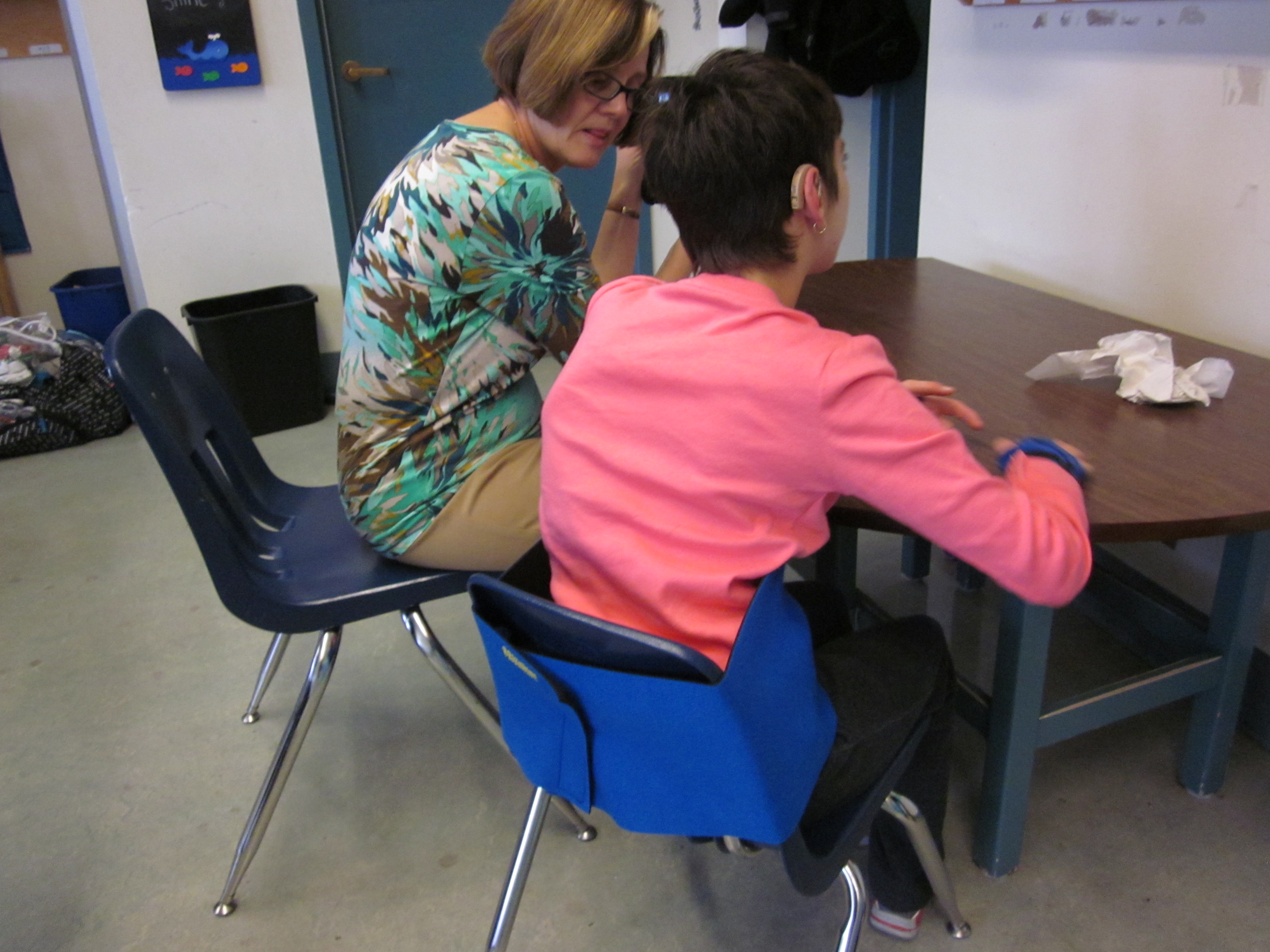Module 1: Instructional Planning and Strategies
Physical Needs in the Classroom
Basic Needs and Underlying Medical Considerations
In Course 2, Individual Learning Differences, you learned about medical conditions that can impact learning. Background medical information is important to keep in mind when planning and implementing an educational program for your student with complex needs.
Whenever possible, meet these basic bodily needs first. Sometimes, medical concerns can’t be completely addressed and will affect your student's ability to participate from day to day. Expectations for participation in routines can be adjusted according to your student's physical state. Once the student has their energy back, expectations can be adjusted.
The following is an example of how expectations can be adjusted, depending on the energy level of your student. In performing an attendance routine, the student, a classmate, and their EA take the classroom attendance sheet and deliver it to the office.
- On a full energy day, the student uses their speech output device independently to greet the teacher and request the attendance sheet.
- On a medium energy day, the student uses the speech output device with verbal prompting to request the attendance sheet from the teacher.
- On a low energy day, the student is provided hand-under-hand physical assistance to use the speech output device to request the attendance sheet from the teacher.
Pain is a common concern and can impact a person’s ability to focus. Adequate pain management aims to ease discomfort and improve function.
If your student has had a disrupted sleep, changes to medications, or increased seizure activity, they may be fatigued and less able to learn new things.
Gastrointestinal considerations are also important. If your student is hungry, thirsty, experiencing reflux, or discomfort due to constipation, these can all have an impact on their learning.
Body Positioning
When a student’s body is well positioned, they do not have to use their energy to stay upright. Positioning facilitates better attention, less fatigue, and more efficient movement. Positioning uses a concept of physics that the wider the base of support and the more aligned the body parts are over that base, the more stable it is. Imagine the Egyptian pyramids versus the Leaning Tower of Pisa.

Opportunity for Practice: Body Position
- Stand up and balance on one foot with your eyes closed, lean to one side, now recite the alphabet backward.
- Did this body position make the cognitive task harder?
- Now try it on the other foot.
Ready Position
For optimal learning the student must be in a ready position. In a ready position:
- Materials are in student’s best visual field, and accessible
- Environmental distractors are reduced
- Buttocks are fully back in the seat
- Hips are sitting level and squarely facing the front
- Needed supports and straps are in place
- Feet are flat on the floor or on footrests
- Arms are supported on the arm rests or the surface in front, with elbows slightly in front of shoulders
- The trunk and head are as upright as possible
- The student shows that they are paying attention with their own personal cues
A ready position allows the student to use their full visual range, attend to their work, and makes tasks like reaching and eating much easier. Being in a ready position also cues the student that it is time to work and facilitates more effective communication.

Opportunity for Practice: Characteristics of the Ready Position
Look at the photo below and identify the characteristics that show the student is in the ready position.

What are some other things you could do to make sure your student is in the ready position?
Possible Responses
- Materials are in the student’s best visual field, and accessible
- Environmental distractors are reduced
- Buttocks are fully back in the seat
- Hips are sitting level and squarely facing the front
- Supports and straps needed are in place
- Feet are flat on the floor or on footrests
- Arms are supported on the arm rests or the surface in front, with elbows slightly in front of shoulders
- The trunk and head are as upright as possible
- The student shows that they are paying attention with their own personal cues